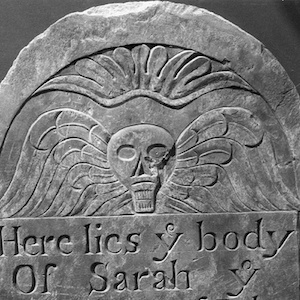Health/ Disease

Birth Rituals in the Codex Mendoza
The image from the Codex Mendoza (produced ca. 1535-1550) describes the Aztec birth ritual of bathing and naming the child, which, according to accounts from the 16th century, was usually held on the fourth day after birth.

Rubeola Vulgaris - Measles
Robert Willan (1757-1812) was a physician who practiced in London. Like Sydenham he was fascinated by the relation of weather to epidemics and kept strict records on when they occurred over several years.

Transplanting Teeth
This print is by Thomas Rowlandson (1756-1827) and is dated 1787. It is a satirical comment upon the real practice of rich gentlemen and ladies of the 18th century paying for teeth to be pulled from poor children and transplanted in their gums. The dentist present is portrayed as a quack.

Age of Menarche in Norway
This graph shows us the average year of menarche, a female's first menstrual cycle (often considered the beginning of puberty), from 1860 to 1980 reported by adult female patients at maternity clinics in Norway.

Linen Towel with Indigo Woven Border
Italian noblewomen presented soft, absorbent, linen towels with indigo woven borders to birthing mothers during the 14th century and later.

Life Histories (Chile) Table
Women all over the world may undergo life-course transitions from daugtherhood to motherhood, a great similarity that shapes their lives due to what is perhaps the biological difference that most distinguishes women from men: their childbearing capacity.

Analyzing Personal Accounts
The modules in Methods present case studies that demonstrate how scholars interpret different kinds of historical evidence in world history.. In the video below, historian Merry Wiesner-Hanks analyzes two personal accounts written by women living in northern Germany in the 17th century.

Excerpt from Memoirs by Catharina Schrader
This is a memoir written by a Protestant midwife, Catharina Schrader, who lived in Germany during the 1600s. It offers an important window into the daily lives and life cycles of non-elite women living in early modern Europe.

Sanitarium Weet-Bix Packet
The only such product endorsed by world famous mountaineer and humanitarian, Sir Edmund Hillary, Sanitarium's sugar-free wholegrain wheat biscuit, Weet-Bix, has long been the country's most preferred breakfast cereal.

Gravestones and Childhood
In 17th-century New England, Puritan beliefs about "infant depravity" (born with "original sin") generated anxieties about "eternal damnation" that shaped methods of childrearing and notions of death. Puritan beliefs can be "read" on the gravestones often made out of dark grey slate.